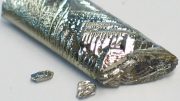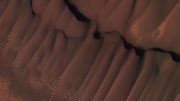
Researchers demonstrated a real Sonic Screwdriver – lifting and spinning a free-floating 10 cm (4 in) diameter rubber disk with an ultrasound beam.
You know technology is advancing fast when tools from science fiction shows start to become a reality. Scientists at the University of Dundee decided that Doctor Who shouldn’t be the only one enjoying a Sonic Screwdriver, so they took equipment designed for MRI-guided focused ultrasound surgery and developed their own.
When the scriptwriters for Doctor Who imagined a futuristic device, they came up with the Sonic Screwdriver. Now a team of physicists at the University of Dundee have taken equipment designed for MRI-guided focused ultrasound surgery and demonstrated a real Sonic Screwdriver — lifting and spinning a free-floating 10 cm (4 in) diameter rubber disk with an ultrasound beam.
The Dundee researchers used energy from an ultrasound array to form a beam that can both carry momentum to push away an object in its path and, by using a beam shaped like a helix or vortex, cause the object to rotate.
“This experiment not only confirms a fundamental physics theory but also demonstrates a new level of control over ultrasound beams which can also be applied to non-invasive ultrasound surgery, targeted drug delivery, and ultrasonic manipulation of cells,” said Dr. Mike MacDonald, of the Institute for Medical Science and Technology (IMSAT) at Dundee.
The results of the ‘sonic screwdriver’ experiment are published in the American Physical Society’s journal Physical Review Letters.
The theory the Dundee researchers were testing is valid for both sound and light and is one that is used in topics from quantum communications to biophotonics but which had not previously been proved in a single experiment. The theory states that the ratio of angular momentum to energy in a vortex beam is equal to the ratio of the number of intertwined helices to the frequency of the beam.
“For the first time, our experimental results confirm directly the validity of this fundamental theory,” said Dr. Christine Demore, from IMSAT. “Previously this ratio could only be assumed from theory as the angular momentum and power in a beam had only ever been measured independently.”
The ultrasound beam generated by the Dundee team resembles the ‘double-helix’ structure of DNA but with many more twisted strands, or helices. This vortex beam generates a rotating, angular component of momentum that can exert torque on an object. In the recent publication, they showed how they could generate vortex beams with many intertwined helices, using a 1000-element ultrasound transducer array as an acoustic hologram. These beams are powerful enough to levitate and spin the 90g disk made of ultrasonic absorber in water.
The research forms part of a UK-wide Engineering and Physical Sciences Research Council (EPSRC) project known as ‘Sonotweezers’, which involves the Universities of Bristol, Dundee, Glasgow, and Southampton as well as seven industry partners. SonotweezersTM aim to bring dexterity and flexibility to ultrasonic manipulation, allowing applications in a wide range of topics including regenerative medicine, tissue engineering, developmental biology, and physics.
“The ‘sonic screwdriver’ device is also part of the EU-funded Nanoporation project where we are already starting to push the boundaries of what ultrasound can do in terms of targeted drug delivery and targeted cellular surgery,” said Dr. MacDonald. “It is an area that has great potential for developing new surgical techniques, among other applications, something which Dundee is very much at the forefront of.
“Like Dr. Who’s own device, our sonic screwdriver is capable of much more than just spinning things around.”
Reference: “Mechanical Evidence of the Orbital Angular Momentum to Energy Ratio of Vortex Beams” by Christine E. M. Demore, Zhengyi Yang, Alexander Volovick, Sandy Cochran, Michael P. MacDonald and Gabriel C. Spalding, 8 May 2012, Physical Review Letters.
DOI: 10.1103/PhysRevLett.108.194301









Be the first to comment on "Physicists Create Their Own Doctor Who Styled Sonic Screwdriver"